 |
 |
 |
| |
Adolescents and young adults with HIV using long-acting injectable cabotegravir/rilpivirine as a standard of care: outcomes of the observational cohort at 26 months
|
| |
| |
AAIDS 2024 July 20-26 Munich
T. Williams1, L. Anderson1,2, J. Unternaher1, W.L.A. Koay3, K. Bright1, J. Mareuil1, N. Rakhmanina1,2,4
Institutions
1Children's National Hospital, Division of Infectious Diseases, Washington, D.C., United States, 2The George Washington University School of Medicine, Department of Pediatrics, Washington, D.C., United States, 3Medical University of South Carolina, Department of Pediatrics, Division of Infectious Diseases, Charleston, United States, 4Elizabeth Glaser Pediatric AIDS Foundation, Technical Strategies and Innovation, Washington, D.C., United States

BACKGROUND: Long-acting injectable (LAI) cabotegravir/rilpivirine (CAB/RPV) can improve antiretroviral treatment (ART) adherence and outcomes among adolescents and youth with HIV (AYHIV). Current data on LAI CAB/RPV in AYHIV are limited to clinical trials. We evaluated the outcomes of LAI CAB/RPV among AYHIV in care at Children's National Hospital, Washington, DC.
METHODS: We analyzed an observational cohort of AYHIV =12-<25 years of age who initiated LAI CAB/RPV between October 2021 and December 2023 as a standard of clinical care. Data included demographics (age, race, ethnicity, and sex at birth), HIV transmission mode, body mass index (BMI), prior ART, self-reported injection site pain, adverse events, HIV RNA, ART resistance, CAB/RPV dosing and retention in care.
RESULTS: Nineteen AYHIV (53% male; median age=19.2 years [14.9-23.6 years]; 84.2% African-American; 63.2% with perinatally-acquired HIV; median BMI=25.8 kg/m2 [18.6-57.9 kg/m2]) transitioned from oral ART to monthly LAI CAB/RPV with longest LAI duration of 26 months. Most AYHIV (94.7%) were virally suppressed =6 months on prior ART and transitioned (89.5%) from one daily pill with two NRTIs plus one INSTI. Two AYHIV (10.5%) experienced =1 viral blips =200 copies/mL [207-1,100 copies/mL] and one AYHIV (5.3%) experienced =1 viral blips <200 copies/mL when transitioning to bimonthly injections during the first 12 months on LAI CAB/RPV. These viral blips did not result in the development of resistance to CAB and/or RPV. Most AYHIV (89.5%) switched to bimonthly LAI CAB/RPV after maintaining HIV RNA <20 copies/mL for 3-6 months on monthly injections. All AYHIV on LAI CAB/RPV were virally suppressed at the end of the study period. Injection-associated pain/discomfort ranged from mild to moderate, lasted 0.5-1 days and improved with physical activity. Two AYHIV (10.5%) with perinatally-acquired HIV developed one-time immediate post-injection adverse reactions (malaise and pain) which self-resolved within 20 minutes. There were zero missed or delayed injections.
CONCLUSIONS: Despite challenges (e.g., viral blips and selected AYHIV with high BMI), we report 100% engagement in care and viral suppression among 19 AYHIV on LAI CAB/RPV at =26 months follow-up. More data are needed to evaluate the long-term outcomes and sustainability of LAI CAB/RPV used in clinical care by AYHIV.
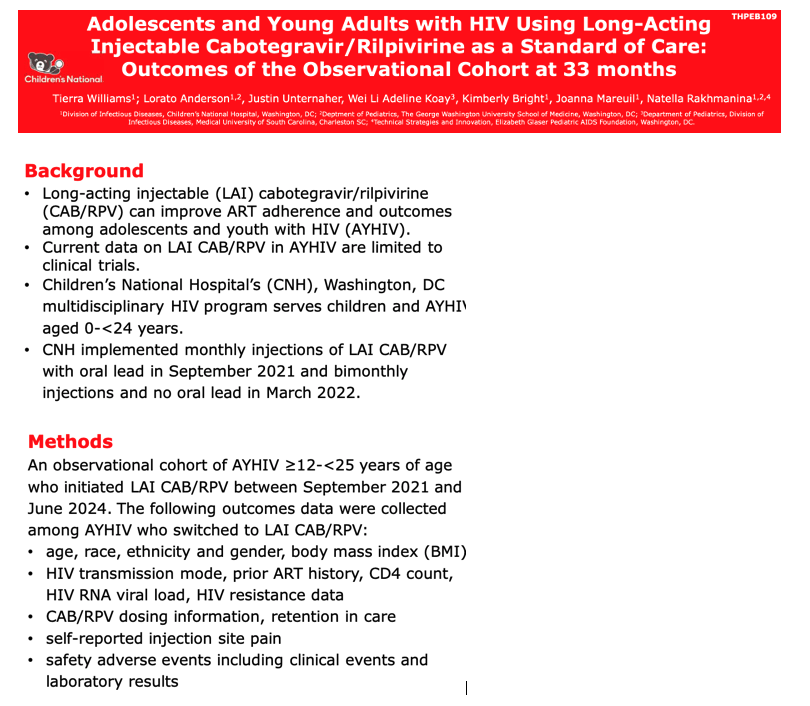
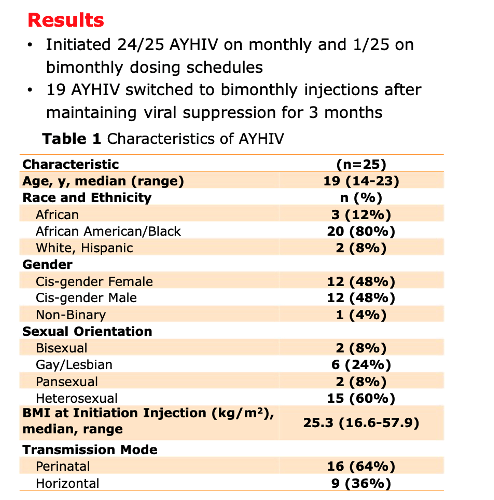
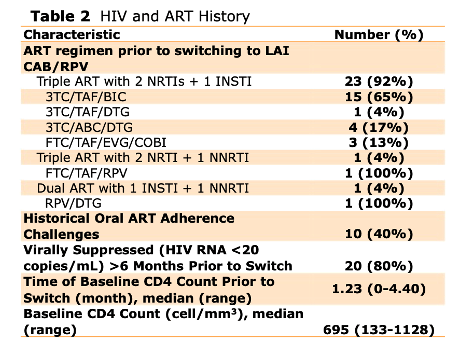
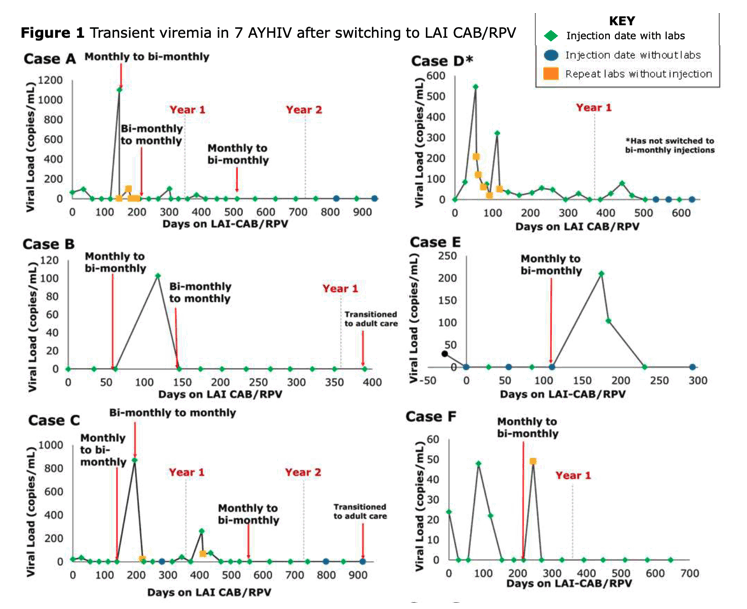
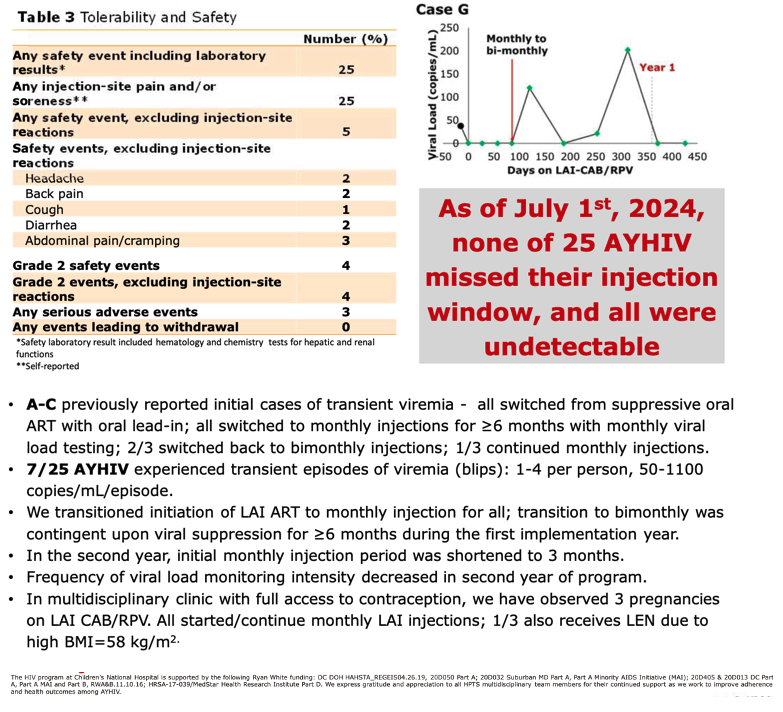
|
| |
|
 |
 |
|
|